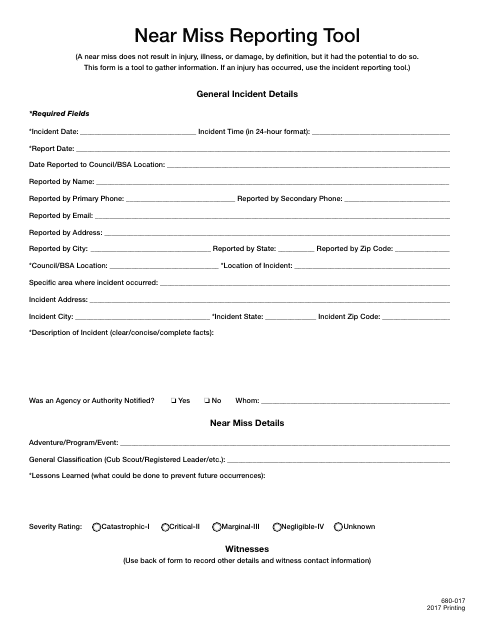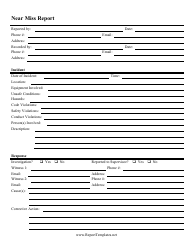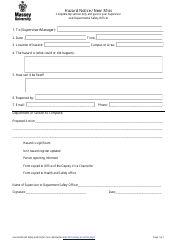Near Miss Report Template - Probability / Severity Definitions
A Near Miss Report Template with Probability/Severity Definitions is used to document and assess incidents that almost resulted in an accident or injury. It helps to analyze the likelihood of an event occurring (probability) and the potential impact if it were to happen (severity). This allows organizations to address potential hazards and implement preventive measures to improve safety.
FAQ
Q: What is a near miss report?
A: A near miss report is a document that outlines incidents or situations that could potentially have resulted in harm but did not.
Q: Why is it important to report near misses?
A: Reporting near misses helps identify potential hazards and allows for corrective actions to be taken to prevent future incidents.
Q: What is probability?
A: Probability refers to the likelihood or chance of a near miss incident occurring.
Q: What are the different probability definitions in a near miss report?
A: The different probability definitions in a near miss report typically include low, medium, and high.
Q: What is severity?
A: Severity refers to the potential impact or harm that could have occurred if the near miss incident had actually resulted in an accident.
Q: What are the different severity definitions in a near miss report?
A: The different severity definitions in a near miss report typically range from low to high, with higher severity indicating greater potential for harm.
Q: How are probability and severity used in a near miss report?
A: Probability and severity are used in a near miss report to assess and prioritize risks, helping to determine appropriate preventive measures to be implemented.






